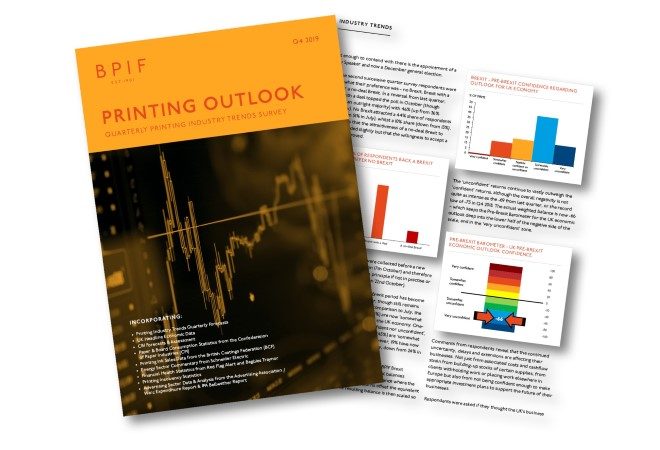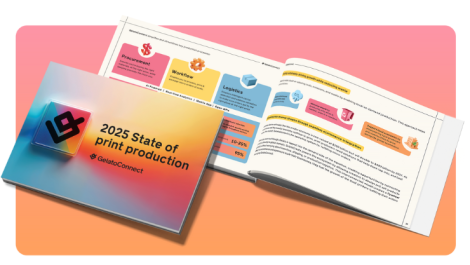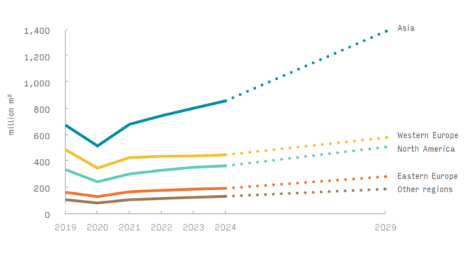The BPIF’s Printing Outlook survey has described the third quarter of 2019 as ‘disappointing’ for the UK printing industry, with both output and orders failing to live up to expectations and no seasonal boost comparable to the one experienced last year.
The survey revealed that 37% of printers increased output levels in Q3, 31% held output steady and 32% experienced a decline. This was considerably worse than expected and the worst Q3 since the Brexit referendum in 2016.
The silver lining in the report was that the upcoming general election should provide a significant boost for Q4, though the uncertain climate is not a breeding ground for confidence.
Brexit continues to top the list of business concerns, with 69% of respondents selecting it as one of their top three worries. Competitor pricing once again came second, picked by 49%, but paper and board was driven out of the top three by late payments by customers, chosen by 24% of those surveyed.
‘It is important to point out that all of the survey responses were collected before a new deal was struck with the EU and therefore before that deal was agreed, in principle if not in practice or timeliness, by UK parliament,’ BPIF economist Kyle Jardine pointed out. ‘Parliament has also subsequently voted in favour of a general election. It now seems likely that a number of printers will benefit from a welcomed boost to orders and output in Q4. We’ll be looking to see if that comes through in the next Printing Outlook survey.’
BPIF chief executive Charles Jarrold added, ‘Understandably Brexit continues to dominate the headlines, however company failures have also featured highly too. The Printing Outlook report is not solely reliant on the data picked up from survey respondents, it also pulls in intelligence from other sources. The section on insolvencies clearly puts current levels into historical context whilst the Red Flag Alert statistics provide a valuable picture of the financial health of the printing industry.’
The Red Flag Alert statistics Mr Jarrold is referring to come from a detailed financial health analysis of data for the 5000 largest print and printed packaging companies, with Red Flag Alert data from Begbies Traynor.
The red flag is applied to high risk companies with poor credit scores and/or serious detrimental information filed against them as well as companies that have undergone insolvency or have a striking-off action registered against them. This is still a relatively small proportion of companies, but it has grown from 3% in 2011 to 8% today. The green proportion, highlighting the share of the 5000 companies that are in a strong and secure financial position, had increased from 27% to 42% in the same period.





